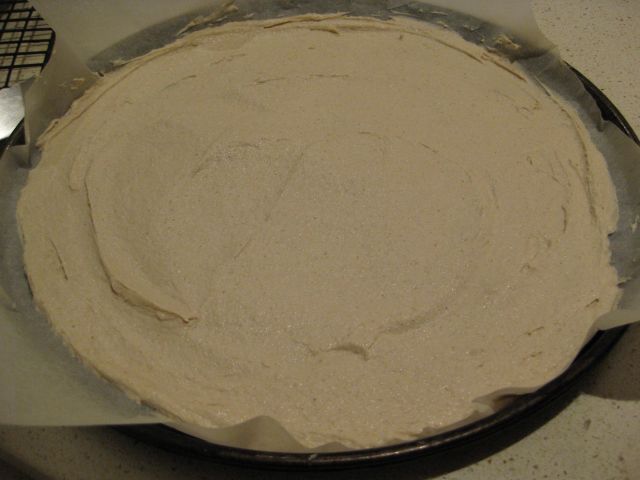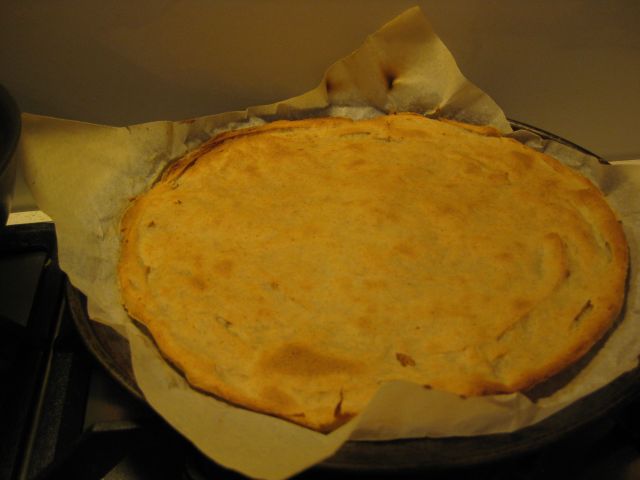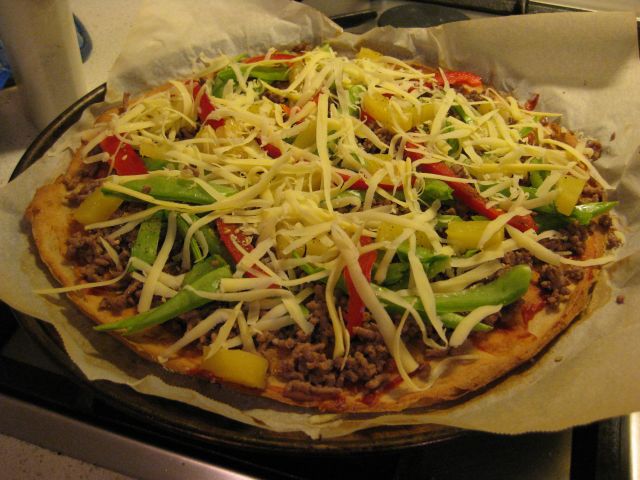This pizza base is Grain Free Living’s bread recipe, but spread on a pizza tray and used as a pizza base.
Suitable for children with a Salicylate allergy (yep, it’s failsafe). This pizza base is: Gluten Free, nut free, soy free, egg free and dairy free AND it still tastes good! You need an accurate pair of scales for this recipe.
Ingredients
Flour Mix – YOU NEED A TOTAL OF 390g or 14oz of FLOUR
THE MIX BELOW WORKS BEST FOR ME BUT YOU CAN SWAP IN BESAN FLOUR FOR ONE OF THE FLOURS IF YOU LIKE.
150 g / 5 oz / 1 cup quinoa flour
150 g / 5 oz / 1 cup buckwheat
40 g / 2 oz / 1/4 cup potato flour
50 g / 2 oz / 1/4 cup tapioca/arrowroot flour
To your chosen flour mix you need to add:
2 tsp salt
2 heaped tsp caster sugar
2 tsp xanthum or guar gum
4 tsp dried yeast
Then the Wet Ingredients:
UP TO 500ml / 17 fl oz warm water – IMPORTANT – Sometimes you will need all of this water, sometimes you won’t. It depends on humidity, altitude and moisture content of flour, which changes from batch to batch. see “TIPS ON THE FLOUR MIX” below for more information and detailed notes in the method. I Usually use about 460ml.
2 tablespoons / 40 ml / 1.35 fl oz olive or canola oil
Method
Lightly grease and line a couple of pizza trays with baking paper.
TO MAKE BY HAND
Sift all the dry ingredients into a large bowl. Add the yeast and make sure it is well combined/mixed. (SHORTCUT: I measure all the dry ingredients into a bowl including yeast and then just whisk it really well – it does the same thing as sifting and eliminates a step and fussing around with sifting).
In a separate jug combine 500ml of warm water with the oil.
Add most of it to the dry ingredients and beat with a wooden spoon well combined. Stir it really well. Then stir it a bit more. It is important that the ingredients are really really well mixed.
NOTE: You are looking for a sticky SLOW fall off the spoon consistency. If you need to shake the spoon for the dough to fall, its too dry, add more water. If it falls off the spoon quickly your moisture is too wet, not much you can do about that. How much water you add is down to experience, it may take you a couple of goes to get this “just right”, see “TIPS ON THE FLOUR MIX” below for more information.
TO MAKE BY FOOD PROCESSOR/BLENDER/THERMOMIX
Dump all your dry ingredients into your food processor/blender/thermomix and give them a quick blast to mix (Thermomix 5 seconds speed 6)
Add most of your Liquid and Mix 30 seconds speed 6. Test for consistency and if needed, add the rest of your liquid.
(See note above on how to check for right consistency)
Now blast it in your food processor/blender/thermomix for a good 2 minutes (Thermomix use Bread setting).
NOW TO SPREAD YOUR MIX INTO YOUR PIZZA TRAY


Spoon mixture into your prepared pizza tray and smooth out the top. You need to spread it quite thinly so use a knife or spatula to get a smooth even spread. The thicker you spread the thicker your base, remember it will rise about 1/3 to 1/2 at least. Depending on the size of your pizza tray, you should get at least two large pizza’s or 3 – 4 medium pizza’s
This base freezes really well, so pre-cook all your bases and any you don’t use can be wrapped in foil and plastic wrap and kept in the freezer for a fast meal
Leave to rise in a warm spot while you preheat the oven to 180ºC, about 20 minutes.
Bake for 20 minutes until base nice and brown. Remove base from oven and add your toppings, then back in the oven for 10-15 minutes until your toppings are cooked to your liking.
Tips on the Flour Mix / Troubleshooting your Bread
Different flour combinations all can work well with this bread but all flours will absorb liquid differently. If you change the flour combinations take note of the following:
Using lighter flours like more potato or tapioca starch will mean you will need less water. Add it a bit at a time until you get the right sticky falling slowly off the spoon consistency. If its too runny weird things will happen (your bread will over rise when cooking and then collapse when cooling).
Using heavier flours like more buckwheat, quinoa, amaranth etc will mean you may need more water. Add it a bit at a time until you get the right sticky falling slowly off the spoon consistency. If its too dry weird things will happen (your bread will not rise when cooking and then have the consistency of a brick).
Don’t use too much tapioca flour – or if you do you need to beat your mix for about 4 minutes. Otherwise your bread will seem like it hasn’t cooked no matter how long you bake it.
Thanks
Thanks to Kim for the original recipe, the recipe has been changed somewhat after many loaves and lots of experimenting to what works best for me and my oven, plus with the tips of others who are making this bread.
